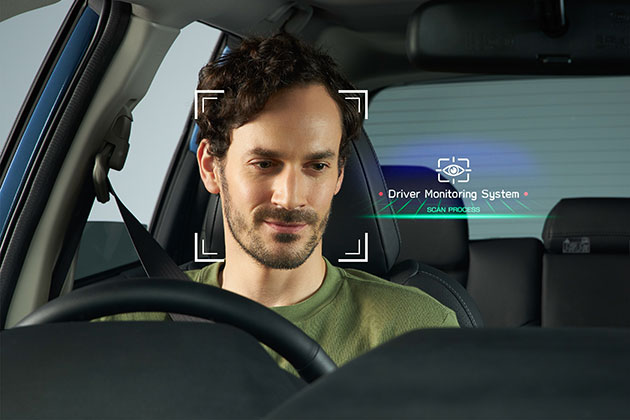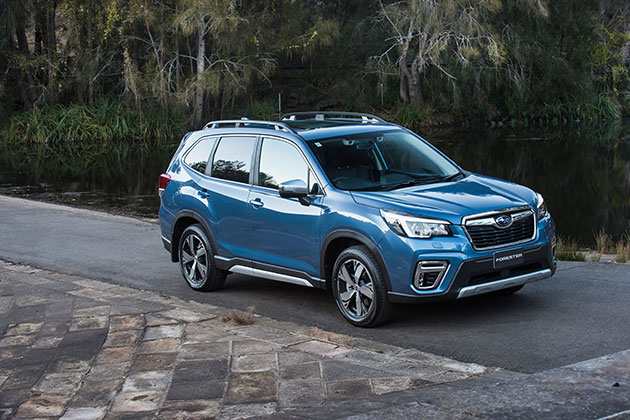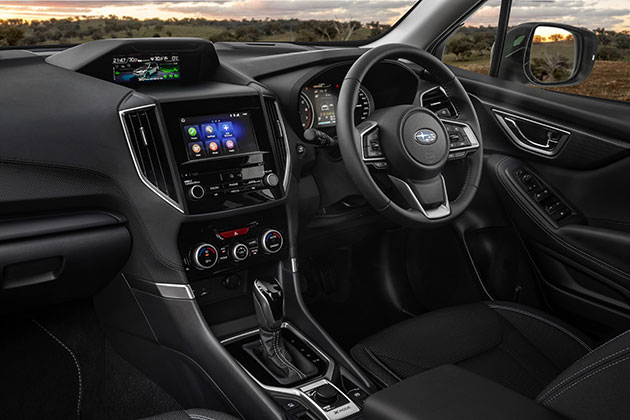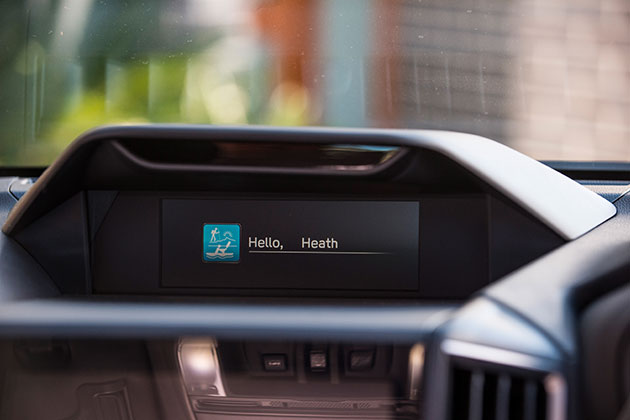November 9, 2021 By: Byron Mathioudakis
New technology is enabling our cars to get to know us better, to keep an eye on us while we drive, and to make us more comfortable for the ride.
Our cars are getting smarter and safer with each passing year.
Sensors such as those used for autonomous emergency braking (AEB) can detect an obstacle ahead of the car and trigger warnings for the driver. If the driver still doesn’t respond, the brakes can be automatically applied to avoid hitting the object.
In 2021, even the cheapest Kia Picanto has it.
Smart, right? But now, some of this sensing technology is moving inside the car, keeping an electronic eye not just on the road ahead, but also on the person behind the wheel.
This is where advanced sensing technology and facial recognition can play an even bigger role, assessing the driver and their responses as the car is in motion to ensure a safer and a more comfortable driving experience.
RELATED:
How automated are the cars we already drive? »

Scanning the driver’s face and eyes
This tech isn’t coming soon. It’s already here.
Known as a driver monitoring system (DMS), or more generally as driver-alert or driver-fatigue alert, this involves a driver-facing camera mounted somewhere in front of the driver, usually within the upper dashboard or the interior rear-vision mirror housing.
Using infrared light-emitting diodes (LEDs), it constantly scans the driver’s face at all times day or night, (even those who wear glasses), to ensure their eyes are always looking forward to the road ahead and not down at a phone, at passengers or out the side window. Likewise, it can ascertain drowsiness associated with fatigue – a common cause of crashes.
It builds on the existing lane-keeping assistance technology that’s been around since the late-2000s, where sensors such as radar and cameras monitor lane markings on the road and the car’s position within them (or not).
RELATED:
Car safety features you should know about »
The DMS constantly assesses the driver’s face and reacts almost instantly when it detects an issue by sounding an audible alarm, flashing up an alert warning within the instrumentation, vibrating the seat and/or even spraying a harmless mist into the driver’s face, in some regions where legal.
All driver warnings can be adjusted for severity, and some – like the last two – can be switched off.
It isn’t just obvious head-turning distraction either. If the driver’s eyes stray, squint or narrow for a prolonged period (signifying reduced vision due to excessive sunlight, for example), don’t blink as often (which suggests distraction or absent mindedness) or close, even for a moment longer than usual, the DMS alerts go off.
The DMS also knows if the driver’s head starts to tilt at an odd angle suggesting drowsiness or sleep. The alarm is designed to wake them up or alert fellow occupants to wake the driver up.
This is life-saving technology that will be made mandatory in vehicles sold in the European Union from 2024.
Subaru’s EyeSight system is probably the most well-known proprietary DMS in Australia, but most carmakers are now offering similar DMS technology in some of their models, or soon will.

Detecting a medical emergency
In situations where a driver is suddenly incapacitated, such as an event like a heart attack or stroke, some advanced DMS systems can sense this and automatically activate other semi-autonomous safety systems.
Here’s a typical scenario.
At 110km/h, the driver loses consciousness. The DMS senses this immediately and starts slowing the car down gradually, switching an indicator on to merge left, alerting surrounding traffic. The lane-keeping system then steers the car, when safe, to the left as the adaptive cruise control slowly reduces the car’s speed, and brings it to a stop.
Next, the DMS will automatically send a message to emergency services to attend the incident, while also sending out GPS co-ordinates.
As we move closer to self-driving cars, such systems are essential for higher-level autonomous driving situations, where the technology requires the driver to retake control after a period of the car doing all the driving. DMS needs to be fully functioning, ready and waiting, should the driver need to suddenly take control.
RELATED:
The anatomy of a crash »

Personalised experiences for each driver
Driver monitoring systems are constantly evolving, to the point where they can now also recognise each pre-assigned driver and alert the car’s systems to adjust to each individual’s driving preferences.
For example, where a vehicle is driven regularly by more than one person, one of them may have the seat, steering wheel position, instrumentation, climate control and audio system set to suit them. When they get behind the wheel, the system will detect who they are and adjust everything to suit. The presence of another driver will trigger a different set of in-car adjustments according to their preferences.

Furthermore, if there are younger drivers involved, the DMS can be set to pre-determined speed limits and audio volume to help reduce driver distraction, and even bar phone messages until the car is parked. Similar tech has been around for more than a decade now in models such as those equipped with Ford’s Smart Key, but now with DMS, no special key fob is required. However, some of these functions can be overridden.
While to some, the notion of a car monitoring your eyes and predicting your behaviour may feel like crossing a line, the lifesaving advantages of driver and other in-car monitoring systems are undeniable.
With DMS becoming mandatory in the EU from 2024, our cars will continue to include technology capable of correcting our lapses of concentration in increasingly sophisticated ways. And sometime in near the future it will all seem as commonplace as AEB in a 2021 Kia Picanto.
Need to check the safety rating on your next car?
Search vehicles by make and model and be sure that your next car has the right technology to keep you and your family safe on the road.
